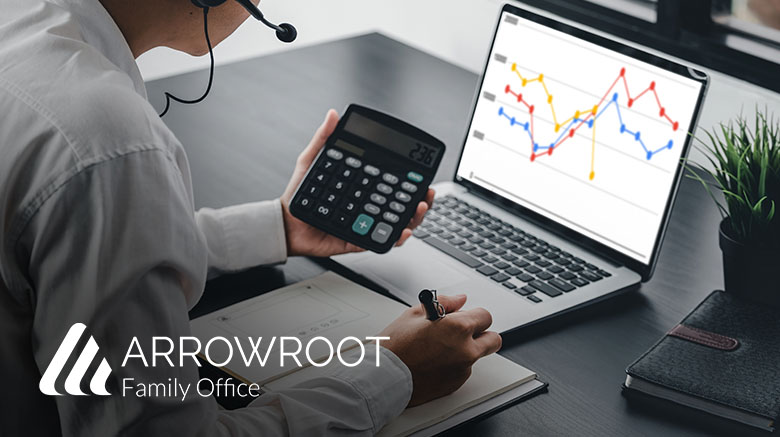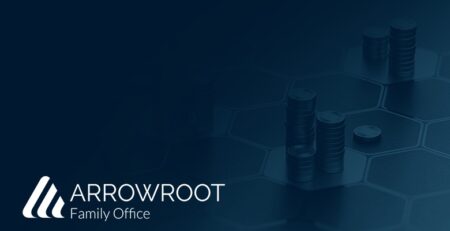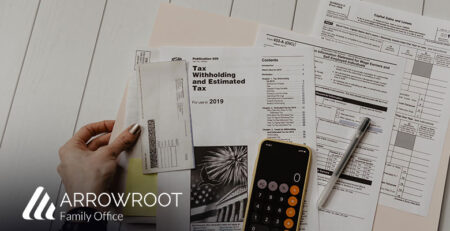A Guide to Different Types of Retirement Plans for Small Businesse Owners


Retirement for Business Owners
Retirement is a common occurrence for individuals looking to leave the workforce at the end of their careers. The standard retirement age in the United States is over the age of 65. By this point in an individual’s career, one should be able to retire through various savings and investment strategies that have gained them enough money to comfortably live without the need to work. Many countries also have national pension or benefits systems in place to supplement a retiree’s income to help assist them with their savings. In the U.S, this system is called Social Security.
However, the path to get to financial freedom may be different for individuals who have ownership of their own small businesses. These small businesses have different rules when it comes to taxes and the employee benefits they are able to provide to an individual. This means that common employer-sponsored retirement plans, like a 401k, may not be possible for these small business owners.
Understanding Aspects of Retirement
Understanding the way retirement works for small business owners and how it may vary from the path employed individuals may take is important when planning for one’s retirement.
Small business owners do qualify for Social Security benefits as the Social Security Administration treats self-employment income the same as they do with employee wages or salary. Regardless of employment status, in order to retire with partial Social Security Benefits, individuals commonly wait till the age of 62. However, in order to receive full benefits, individuals must wait till the age of 67 before considering retiring from the workforce. The benefits that Social Security provides vary based on income and other individualized factors. These benefits should be explored to their fullest potential when planning for retirement, as Social Security is an important aspect of one’s retirement strategy. Social Security often becomes one of the only sources of active income after retirement from one’s small business besides any additional income the sale of the business and its assets could make.
When saving for retirement, it is also essential to determine the time horizon you and your partner may have. This will not only determine how much longer you or your partner may live, but it will also establish when to sell the business. Because small business owners have more flexibility in exactly when they can retire, they can adjust their time horizon for retirement based on how much revenue their small business is providing and when and if an exit opportunity for the sale of their business materializes. Ensuring that you and your partner do not run out of money in your lifetime is crucial, so proper retirement planning is essential for a good quality post-retirement life. On average, individuals may live 15 to 20 years after turning 65. With proper health, exercise, and dieting, that number can increase by another 10 years, so ensuring that enough money is invested or saved up in order to have savings to fall back on is essential.

Helping you achieve your evolving financial objectives
Types of Retirement Plans for Business Owners
It is the responsibility of the small business owner to set up their own retirement plan, as employer-sponsored plans, like 401ks, may not be available to take advantage of. Small business owners may also often be responsible for helping and assisting their employees with retirement strategies in order to provide them with the opportunity to have a successful retirement. Due to the small size of the business, retirement plans and strategies that work for owners can also be applied to the benefit of the employee.
Besides the liquidation of the business, there are other types of traditional retirement plan options to fund one’s retirement. These options include both IRAs and 401ks and are excellent sources to add to one’s retirement income.
SIMPLE IRA
The SIMPLE IRA, or the savings incentive match plan for employees, is a retirement plan specifically designed and available for small businesses. It is a tax-deferred retirement account established by employers of a small business, including self-employed individuals. This retirement account is specially designed for small business employers who do not offer any other type of retirement plan and also have fewer than 100 employees working for the business.
In 2022, individuals are able to defer up to $14,000 of their salary to the plan. This number is planned to rise to $15,500 in 2023. Employees who are older than 50 can defer up to $17,000, allowing the difference of $3,000 to be classified as their catch-up contribution. This catch-up contribution will rise to $3,500 in 2023, adding up to a total of $19,000 for employees over 50.
It is also important to note that employees who participate in other offered employer-sponsored plans cannot contribute more than $20,500 in 2022, with plans to raise that number to $22,500 in 2023. These salary-deferred contributions are also supplemented by employer non-elective contributions. Just like a traditional 401k, employers are able to match these employer contributions up to 3% of the employee’s compensation. Employers are only allowed to contribute 2% of each eligible employee’s compensation up to $305,00 in 2022 and $330,000 in 2023. Employers are required to make minimum contributions to the employee’s account.
These employer contributions are tax-deductible, which can provide certain tax advantages and incentives to small business owners. SIMPLE IRAs are easier to establish and have lower administrative costs than other retirement plans
SEP IRA
Another type of individual retirement account often seen with small businesses is a simplified employee pension (SEP) account. This is an account that lets small business owners and their employees both contribute. Like a SIMPLE plan, a SEP allows small business owners to make contributions on the behalf of the eligible employee. These contributions are tax-deductible, and employees won’t pay taxes on the amount employers contribute until they retire.
In 2022, employees could contribute up to 25% of their yearly income, or $61,000. In 2023 this number will rise to $66,000. However, to qualify for a SEP account, an employee must have earned at least $650 in 2022 or $750 in 2023.
This contribution limit is much higher than a standard IRA or a SIMPLE IRA, allowing employees to pocket more money into their retirement accounts. This account is easy to set up and has very low administrative costs. Practically any small business can establish a SEP. The number of employees or the structure of the business does not matter. Each year the business owner can decide how much to contribute on the behalf of their employees. There is no obligation to contribute if the business has a year of poor performance, and each employer can decide how much they want to contribute every year. Owners of the business are also considered to be employees of their business and can also make contributions to their own accounts. This option is preferable for small business owners as it allows for larger contributions and greater flexibility.
This retirement account option is also extremely beneficial for employees as well. Not only do employer contributions vest immediately, but employees can also manage their own investment decisions within the limits of the retirement plan.
Solo 401ks
Solo 401ks and regular IRAs are both common options for retirement for small business owners. Anyone, regardless of profession or business standing, can invest in an individual retirement account. Business owners are not obligated to but have the option to help their employees with their yearly contributions into their investment accounts. This account does not involve the business owners directly, but indirect contributions are always an option for the business owner to contribute to their employee’s retirement. The 2022 maximum yearly contribution for an IRA is $6,500 and $7,000 if older than 50.
If your small business does not have any employees, that is, the small business owners are the eligible participants for a retirement plan, then a solo 401k may be of interest for your retirement strategy. This can be a viable plan for sole proprietors to save for retirement.
Owners can contribute to this plan as individualized employees and also as business employers since they qualify as both employees and employers. Employee salary deferred contributions of up to 100% of one’s compensation can be possible, but the amount cannot pass the annual limit for the year. In 2022 this limit is listed at $20,500, while the limit will be raised to $22,500 for 2023. If over the age of 50, $6,500 is added to the limit for 2022, and $7,500 will be added for 2023.
However, in total, the business may contribute up to 25% of owner compensation and only 20% in the case of a sole proprietor. This means that the employer contribution limit is listed at $61,000 for 2022 and $66,000 for 2023. Just like for employee contributions, an additional $6,500 is added if one is over the age of 50 in 2022 and $7,500 in 2023.
Developing an Exit Strategy
Developing an exit strategy for your business as an owner may end up being a crucial part of your retirement strategy. The small business that has taken years to build may be the largest asset in an owner’s portfolio. Exiting or selling the business may allow an individual to not only stop working but also allows for the liquidation of the asset in order to add extra income for one’s retirement. In order for this to happen, the business needs to be able to run on its own without your assistance.
It is never too early to start thinking about a potential exit strategy. Finding an appropriate buyer would be the ideal first step. Market conditions may affect your ability to sell the business, but if the market conditions are in good standing, the chances to sell the business increase drastically. Preparing years in advance is also important to be able to determine a proper time to sell. Selling earlier than intended may be an acceptable outcome, as waiting till the last moment to exit may create the impression of a distressed sale among potential buyers. This will give buyers potential leverage to purchase your business at a discount rather than a premium.
FAQs
- Internal Revenue Service. “401(k) limit increases to $22,500 for 2023, IRA limit rises to $6,500.” Accessible From: https://www.irs.gov/newsroom/401k-limit-increases-to-22500-for-2023-ira-limit-rises-to-6500
- Internal Revenue Service. “Retirement Topics – SIMPLE IRA Contribution Limits.”. Accessible From: https://www.irs.gov/retirement-plans/plan-participant-employee/retirement-topics-simple-ira-contribution-limits
- Internal Revenue Service. “SIMPLE IRA Plan.”. Accessible From: https://www.irs.gov/retirement-plans/plan-sponsor/simple-ira-plan
- Internal Revenue Service.gov. “SEP Plan FAQs.”. Accessible From: https://www.irs.gov/retirement-plans/retirement-plans-faqs-regarding-seps
- Internal Revenue Service. “About Publication 560, Retirement Plans for Small Business(SEP, SIMPLE and Qualified Plans).”. Accessible From: https://www.irs.gov/forms-pubs/about-publication-560
- Internal Revenue Service. “Retirement Topics – IRA Contribution Limits.”. Accessible From: https://www.irs.gov/retirement-plans/plan-participant-employee/retirement-topics-ira-contribution-limits
- Internal Revenue Service. “Retirement Topics – IRA Contribution Limits.”. Accessible From: https://www.irs.gov/retirement-plans/plan-participant-employee/retirement-topics-ira-contribution-limits
- Internal Revenue Service. “One-Participant 401(k) Plans.”. Accessible From: https://www.irs.gov/retirement-plans/one-participant-401k-plans
- Internal Revenue Service. “Retirement Topics – 401(k) and Profit-Sharing Plan Contribution Limits.”. Accessible From: https://www.irs.gov/retirement-plans/plan-participant-employee/retirement-topics-401k-and-profit-sharing-plan-contribution-limits
- Internal Revenue Service. “Retirement Plans FAQs Regarding Loans.”. Accessible From: https://www.irs.gov/retirement-plans/retirement-plans-faqs-regarding-loans
- Internal Revenue Service. “Retirement Plans for Self-Employed People.”. Accessible From: https://www.irs.gov/retirement-plans/retirement-plans-for-self-employed-people
- Internal Revenue Service. “2022 Limitations Adjusted as Provided in Section 415(d), etc.”. Accessible From: https://www.irs.gov/pub/irs-drop/n-21-61.pdf
- Internal Revenue Service. “Publication 560 (2020), Retirement Plans for Small Business.”. Accessible From: https://www.irs.gov/publications/p560
- Internal Revenue Service. “401(k) Plans – Deferrals and matching when compensation exceeds the annual limit.”. Accessible From: https://www.irs.gov/retirement-plans/401k-plans-deferrals-and-matching-when-compensation-exceeds-the-annual-limit







Leave a Reply